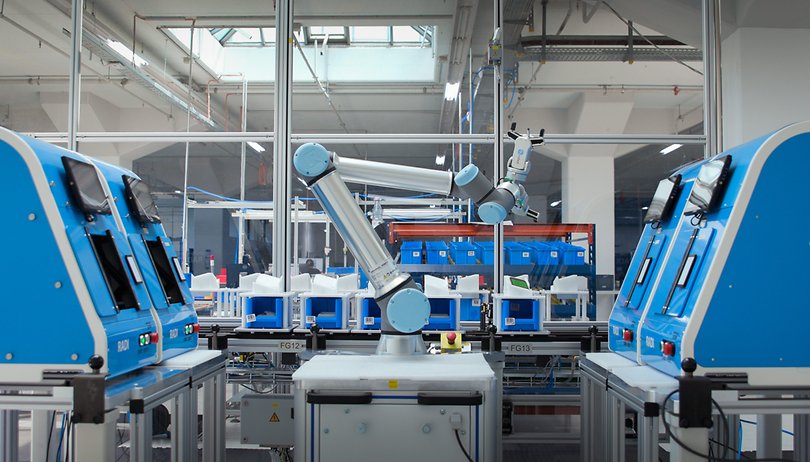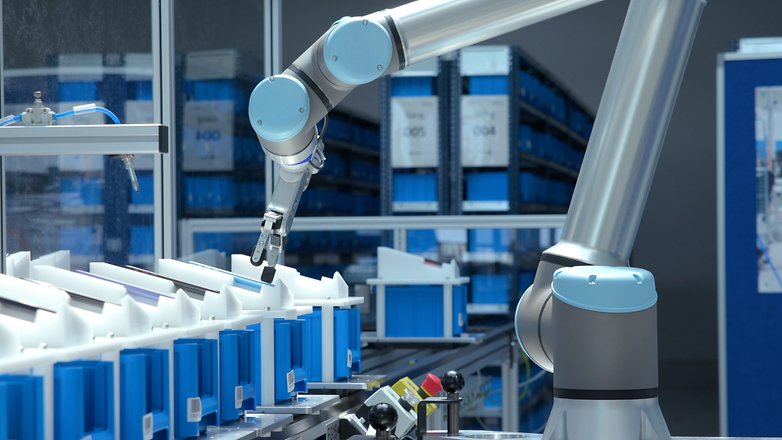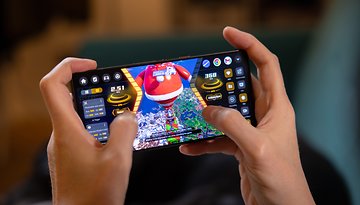Reselling your phone? Check this out first...


Where do refurbished smartphones come from? Last week, we were invited by Rebuy, one of the biggest retailers of refurbished smartphones in Europe—based in Germany. We were able to visit one of their logistic centers that is located on the outskirts of Berlin, where all the smartphones were received from individuals and have to undergo a sorting process, where they are subsequently processed, cleaned, and tested before finding a new forever home.
Last Monday, we embark on a guided tour of the Rebuy Electronics premises in Berlin Falkensee with Johannes Meier, head of the quality control department, to check out how a refurbished smartphone is, well, refurbished. Mind you, it's refurbished and not repaired, because they are not quite the same thing.
First things first, what is Rebuy? I don't know about you, but when I hear about refurbished smartphones I think of Back Market and everything else that goes with it. But Rebuy does things a little differently.
What is Rebuy?
Let me explain. Back Market is a marketplace, basically a virtual marketplace that puts you in touch with different sellers of refurbished smartphones, but Rebuy manages the whole process internally. From the moment of purchase from the user to the reconditioning process (and possibly repairs), all the way to shipping the handset to the new owner, everything is done "in-house", as they say.
This concept was given birth to in the early 2000s, where the original idea came from a bunch of friends who wanted to resell used video games, is now a reality. This very idea has since grown to be one of the European leaders of the circular economy in our microcosm, namely the technosphere. In addition to 13 million books and other media, Rebuy also purchased more than 500,000 electronic devices such as smartphones, laptops, wearables, and cameras in 2021 alone.
- Buying a refurbished phone? Here's what you need to look out for when shopping
The subsidiary, Rebuy Electronics, whose logistics center I was privileged enough to visit and show you what goes on behind the scenes, employs some 550 employees and processes about 12,000 devices per month. When you go to Rebuy's site, opt to have your smartphone evaluated by sending it to them, this is the place where it arrives - in a large 4,500 square meter facility. It will then pass through a production line that comprises several sections, some manned by humans while others are robotic in nature, to complete the reconditioning process.
Enough words, it's time for you to experience how this technological ballet works:
Reconditioning on automatic pilot
What caught my attention when I arrived at Rebuy was how modern the entire facility is. The atmosphere is industrial in nature, which makes it somewhat rough, complete with equipment and workstations that are well arranged, in an almost symmetrical manner. In short, German-style. But the entire setup also had a little bit of a startup nation feel to it, brimming with youthful energy and trendy vibes, where everywhere you turn, you are greeted by gadgets and robotic arms a la Tony Stark.
In this logistics center of Rebuy, automation and human intervention are mixed. As is often the case, as many tasks as possible are entrusted to robots and AI, to "scale" production. What do the humans do then? The human element is maintained to serve as a safeguard and ensure that the robots have not gone off the rails or performed something that they were not supposed to do. We're keeping tabs on you, Skynet.
The smartphone goes through several preparation stages—unpacking, resetting, cleaning - before going to the fully automated segment of the chain. At this point, it is placed by robotic arms in machines that test it thoroughly from the top to bottom. The idea is to make sure it is functional and to evaluate its quality. There are two components at the heart of the process here: "quality" and "grading."

What's interesting is that everything is performed using robots. Artificial fingers scan the screen of the smartphone to check the state of the touch screen. The machine plugs a whole series of cables into the device's various ports. The smartphone also undergoes camera, audio, and even a battery life benchmark. It's pretty scary that my job as a reviewer can be done in less than 5 minutes by a machine, but hey.
More interestingly, even the assessment of the smartphone's appearance is done using AI. The smartphone is photographed 22 times and a homemade algorithm spots possible imperfections if any. I think it's pretty crazy. Of course, the last word always goes to a technician who checks that the process went well and can eventually make the necessary adjustments.
Buying more and more smartphones: a lean business model
You may have noticed that I have mentioned very little about repairs. The fact is that the number of cases where a smartphone, having gone through Rebuy and needs to be repaired, is quite rare. According to Johannes Meier, they represent less than a quarter of the products processed.
The minimum requirement is that the smartphone is 100% functional, with all technical functions working properly. As for the state of its appearance, Rebuy is less inflexible, since there are different grades such as new, very good, good condition and average, still allowing buyers to find what they need.
- Do you like deals? Check our dedicated page here on NextPit
But during the reconditioning process, repairs do not have to become a compulsory step. The idea is to buy back smartphones to resell them. There is this idea of returns of investment inherent in any business model. And at Rebuy, in order to resell more phones, you simply have to buy more. "Currently, 90% of the smartphones sourced come from individuals who go through the company's website," CEO Philipp Gattner explained to me.
The goal is not to repair smartphones and systematically refurbish them. Reconditioning a smartphone means returning it to the best possible condition based on the state in which it arrived sans the costs of reconditioning exceeding the resale price.
To ensure this fine balance between buyback and resale is maintained, Rebuy does everything to maximize its acceptance rate. Acceptance of users who have sent in their smartphone for trade-in and to whom Rebuy makes an offer based on the condition of the device. That's why this "grading" process which you just saw in the video is so important.
If the product the user sends in is as described, Rebuy will buy it back from them at the agreed price. But if something goes wrong, Rebuy has to re-evaluate the buy-back price, but more importantly, it has to make the user accept it and make a lower profit. To do this, the company plays the dual roles of being an educator, and a transparent one at that, with a full report drawn up by a technician that denotes the irregularities found during the "grading" process.
Before, we did this in a very technical manner, but now we really try to explain to people what's wrong with their phone, we also show them using videos. And since we've made that effort, we've managed to increase our acceptance rate to 94%.
— Johannes Meier
In short, at Rebuy, it is a matter of give and take. But in any case, if you refuse their offer, you won't have to pay anything and your smartphone will be sent back to you in a much better condition than the one it was in before. That's certainly a win-win situation, is it not?













